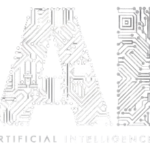Artificial Intelligence (AI) has revolutionized how businesses interact with customers. One of the most significant advancements in this realm is the development of AI chatbots. These intelligent systems are designed to simulate conversations with users, providing a range of services from customer support to lead generation. In this blog, we will explore the different types of AI chatbots and how they can enhance your business operations.
What Are AI Chatbots?
AI chatbots are software applications that utilize natural language processing (NLP) and machine learning algorithms to understand and respond to user inquiries. Unlike traditional chatbots that follow scripted paths, AI chatbots learn from interactions, allowing them to provide more accurate and relevant responses over time. This adaptability makes them invaluable for businesses looking to improve customer engagement and streamline operations.
Benefits of Using AI Chatbots
- 24/7 Availability: AI chatbots can operate around the clock, ensuring that customer inquiries are addressed at any time, even outside of normal business hours.
- Cost-Effective: By automating routine tasks and customer inquiries, businesses can reduce operational costs while improving service efficiency.
- Personalization: AI chatbots can analyze user data to deliver tailored responses, enhancing the overall customer experience.
- Scalability: As businesses grow, AI chatbots can easily handle increased interactions without the need for significant additional resources.
- Improved Response Times: Instant responses to customer queries lead to higher satisfaction rates and reduced wait times.
Types of AI Chatbots
AI chatbots can be categorized into several types, each serving different purposes. Here are the main types:
1. Customer Support Chatbots
These chatbots are designed to assist customers with inquiries, complaints, and support requests. They can answer FAQs, provide troubleshooting assistance, and escalate issues to human agents when necessary. By using customer support chatbots, businesses can significantly reduce wait times and enhance the customer experience.
2. E-commerce Chatbots
E-commerce chatbots help customers navigate online stores, recommend products, and assist with the purchasing process. They can answer questions about product availability, provide order tracking information, and even handle returns. By integrating e-commerce chatbots, businesses can improve conversion rates and reduce cart abandonment.
3. Social Media Chatbots
These chatbots operate on social media platforms like Facebook Messenger and Instagram, engaging with users in real-time. They can respond to inquiries, promote products, and gather feedback. Social media chatbots help brands maintain an active online presence while engaging customers in a familiar environment.
4. Lead Generation Chatbots
Lead generation chatbots are designed to capture potential customers’ information and qualify leads. They can engage website visitors, ask relevant questions, and collect contact details, ensuring that businesses can follow up with interested prospects. By automating lead generation, companies can focus on nurturing relationships with qualified leads.
5. Appointment Scheduling Chatbots
These chatbots simplify the booking process for services by allowing customers to schedule appointments directly through a chat interface. They can manage calendars, send reminders, and handle cancellations. Appointment scheduling chatbots are particularly useful for businesses in the healthcare, beauty, and service industries.
6. Feedback and Survey Chatbots
Feedback chatbots collect customer opinions and satisfaction ratings through interactive surveys. They can ask targeted questions and provide insights into customer experiences, helping businesses identify areas for improvement. Gathering feedback through chatbots makes the process more engaging and less intrusive.
7. Voice-Activated Chatbots
Voice-activated chatbots, often integrated into smart devices like Amazon Echo or Google Home, allow users to interact using voice commands. These chatbots provide hands-free assistance, making them ideal for tasks like setting reminders, controlling smart home devices, or answering general inquiries.
8. Internal Chatbots
Internal chatbots are designed for use within organizations, helping employees with HR inquiries, IT support, and general company information. They streamline internal communication and improve efficiency by providing quick answers to common questions.
Implementing AI Chatbots in Your Business
Step 1: Define Your Goals
Before implementing an AI chatbot, it’s crucial to define your objectives. Are you looking to improve customer support, boost sales, or enhance user engagement? Understanding your goals will help you choose the right type of chatbot and tailor its functionality.
Step 2: Choose the Right Platform
Select a chatbot platform that aligns with your business needs. Consider factors like ease of integration, customization options, and available features. Popular chatbot platforms include Chatfuel, ManyChat, and Dialogflow.
Step 3: Design the Conversation Flow
Creating an intuitive conversation flow is essential for delivering a seamless user experience. Map out potential user interactions, ensuring the chatbot can address various scenarios. Keep the language natural and user-friendly.
Step 4: Train Your Chatbot
AI chatbots learn from interactions, so it’s vital to train them with relevant data. Input common questions and appropriate responses to improve their accuracy. Monitor conversations and continually refine the chatbot based on user feedback.
Step 5: Test and Optimize
Before launching your chatbot, conduct thorough testing to identify and resolve any issues. After deployment, monitor performance metrics like response times and customer satisfaction. Regularly update and optimize your chatbot to enhance its effectiveness.
The Future of AI Chatbots
As AI technology continues to evolve, the capabilities of chatbots will expand. Future developments may include enhanced natural language understanding, improved emotional intelligence, and even more personalized interactions. Businesses that adopt AI chatbots early will be well-positioned to stay ahead of the competition and meet the evolving demands of their customers.
Conclusion
AI chatbots represent a transformative opportunity for businesses to enhance customer engagement, streamline operations, and drive growth. By understanding the various types of chatbots and how to implement them effectively, companies can leverage this technology to create exceptional customer experiences. As AI continues to advance, the potential for chatbots will only increase, making them an essential tool for the future of customer service.



